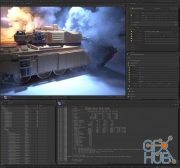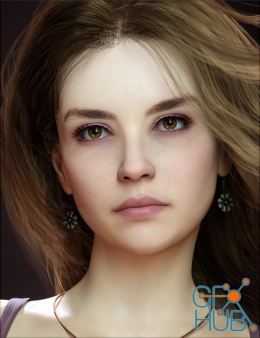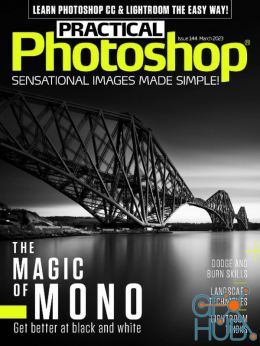Solid Angle 3ds Max To Arnold v3.0.57 for 3ds Max 2018 & 2019 (Win)

Solid Angle 3ds Max To Arnold v3.0.57 for 3ds Max 2018 & 2019 (Win)
Launched at SIGGRAPH 2016 and now with Arnold 5.0, Arnold for 3ds Max (or MAXtoA) is bundled standard with 3ds Max 2018, providing a bridge to the Arnold renderer from within the standard 3ds Max interface.
Changes v3.0.57
Release Date: March 20, 2019
Enhancements:
GPU rendering (BETA): you can now switch between CPU and GPU render devices interactively and expect visually similar results. NVIDIA® GPUs from Turing™ to Maxwell™ architectures are supported, and Arnold will take advantage of multiple GPUs, NVLink™ and NVIDIA® RTX™ hardware accelerated raytracing if available. Note that due to beta status of GPU rendering, a number of features are missing, performance is not final, and use in production is not advised. We plan to gradually improve this in subsequent releases and would appreciate your feedback. For a complete description of requirements, features and caveats, see Getting Started With Arnold GPU.
Improved adaptive sampling: adaptive sampling now uses a more effective criterion. With the new metric, pixels are being dropped gradually in a smoother and much more predictable manner,resulting much lower render times for identical noise levels.
Improved skydome sampling: Arnold now takes into account the normal of the shading point whenimportance sampling the skydome. Therefore bright areas in theskydome are less likely to "steal" samples when they are below the normal. Even for more uniformly colored skydomes, the improved sampler will waste fewer samples in directions that are below the hemisphere, allowing for lower skydome light sample rates to be used which should give a noticeable speedup.
Visible lights: the quad, disk, cylinder and point lights now have a camera and a transmission attribute, allowing these lights to become visible inrender.
Microfacet multiple scattering: the GGX microfacet BSDF used in the standard_surface shader has been improved to account for multiple scattering between the microfacets, which is more physically correct and reduces energy loss on reflection, especially at higher roughness settings.
Improved random-walk SSS: a new randomwalk_v2 SSS mode has been added that scatters more accurately and deeply through highly-transparent/optically-thin objects, which produces SSS with more saturated colors around fine surface detail and heavily backlit regions of an object.
Anisotropy controls forcoat in standard_surface.
Smart opaque: built-in shaders now set their opaque flag automatically based on whether or not the shader settings would require disabling the opaque flag on the object to render correctly.
Operator connection on procedurals: operator graphs can now be connected to procedural and alembic objects through the operator parameter. Only nodes in the procedural or nested procedurals are evaluated by the graph.
New include_graph operator: the include_graph operator allows importing operator graphs and shaders froman .ass file.
Improved ramp_rgb shader: several new interpolation modes were added, as well as an implicit_uvs parameter, which allowstouse barycentric implicit UVs to drive the ramp, instead of regular UVs. This last option can be particularly useful with hair.
New uv_projection shader: this shader allows to do planar, spherical, cylindrical, ball, cubic and shrink_wrap projections.
Faster .ass file writing: writing to .ass files, especially over some Windows networks, can be dramatically faster.
Autobump visibility now exposed in the Arnold Properties.
MaterialX export: the shaders applied to the geometry in the scene can be exported to aMaterialX document with a given look name from the render settings. The exported document contains the look development for the selected geometries including materials, shading graphs, geometry properties, and visibility settings. The look development can be applied using theMaterialX operator.
Operators can now be grouped together in the Operator Graph.
The Merge and Switch operators are now exposing the input ports.
Improved UI for the Set Parameter operator.
All the plugin-specific c++ shaders, used to translate some of the Max legacy maps (Bitmap, Blend, Multi/Sub Object, Particle Age, Physical Sun & Sky) have been replaced by Arnold native nodes, or graphs of them. As a result, exported .ass files should be kick-able under operative systems other than Windows.
Fixes:
Memory spike when instancing Pflow shapes.
ActiveShade re-translating Pflow shapes when orbiting.
Arnold Properties -> Displacement -> Zero cannot be set to a negative value.
Export Selected does not export current frame if Animation check box not selected.
Cannot set Animation Start to more than 1000 in the .ASS Exporter dialog box.
Release Date: March 20, 2019
Enhancements:
GPU rendering (BETA): you can now switch between CPU and GPU render devices interactively and expect visually similar results. NVIDIA® GPUs from Turing™ to Maxwell™ architectures are supported, and Arnold will take advantage of multiple GPUs, NVLink™ and NVIDIA® RTX™ hardware accelerated raytracing if available. Note that due to beta status of GPU rendering, a number of features are missing, performance is not final, and use in production is not advised. We plan to gradually improve this in subsequent releases and would appreciate your feedback. For a complete description of requirements, features and caveats, see Getting Started With Arnold GPU.
Improved adaptive sampling: adaptive sampling now uses a more effective criterion. With the new metric, pixels are being dropped gradually in a smoother and much more predictable manner,resulting much lower render times for identical noise levels.
Improved skydome sampling: Arnold now takes into account the normal of the shading point whenimportance sampling the skydome. Therefore bright areas in theskydome are less likely to "steal" samples when they are below the normal. Even for more uniformly colored skydomes, the improved sampler will waste fewer samples in directions that are below the hemisphere, allowing for lower skydome light sample rates to be used which should give a noticeable speedup.
Visible lights: the quad, disk, cylinder and point lights now have a camera and a transmission attribute, allowing these lights to become visible inrender.
Microfacet multiple scattering: the GGX microfacet BSDF used in the standard_surface shader has been improved to account for multiple scattering between the microfacets, which is more physically correct and reduces energy loss on reflection, especially at higher roughness settings.
Improved random-walk SSS: a new randomwalk_v2 SSS mode has been added that scatters more accurately and deeply through highly-transparent/optically-thin objects, which produces SSS with more saturated colors around fine surface detail and heavily backlit regions of an object.
Anisotropy controls forcoat in standard_surface.
Smart opaque: built-in shaders now set their opaque flag automatically based on whether or not the shader settings would require disabling the opaque flag on the object to render correctly.
Operator connection on procedurals: operator graphs can now be connected to procedural and alembic objects through the operator parameter. Only nodes in the procedural or nested procedurals are evaluated by the graph.
New include_graph operator: the include_graph operator allows importing operator graphs and shaders froman .ass file.
Improved ramp_rgb shader: several new interpolation modes were added, as well as an implicit_uvs parameter, which allowstouse barycentric implicit UVs to drive the ramp, instead of regular UVs. This last option can be particularly useful with hair.
New uv_projection shader: this shader allows to do planar, spherical, cylindrical, ball, cubic and shrink_wrap projections.
Faster .ass file writing: writing to .ass files, especially over some Windows networks, can be dramatically faster.
Autobump visibility now exposed in the Arnold Properties.
MaterialX export: the shaders applied to the geometry in the scene can be exported to aMaterialX document with a given look name from the render settings. The exported document contains the look development for the selected geometries including materials, shading graphs, geometry properties, and visibility settings. The look development can be applied using theMaterialX operator.
Operators can now be grouped together in the Operator Graph.
The Merge and Switch operators are now exposing the input ports.
Improved UI for the Set Parameter operator.
All the plugin-specific c++ shaders, used to translate some of the Max legacy maps (Bitmap, Blend, Multi/Sub Object, Particle Age, Physical Sun & Sky) have been replaced by Arnold native nodes, or graphs of them. As a result, exported .ass files should be kick-able under operative systems other than Windows.
Fixes:
Memory spike when instancing Pflow shapes.
ActiveShade re-translating Pflow shapes when orbiting.
Arnold Properties -> Displacement -> Zero cannot be set to a negative value.
Export Selected does not export current frame if Animation check box not selected.
Cannot set Animation Start to more than 1000 in the .ASS Exporter dialog box.
Download links:
Solid.Angle.3ds.Max.To.Arnold.v3.0.57.For.3ds.Max.2018-AMPED.rar
Solid.Angle.3ds.Max.To.Arnold.v3.0.57.For.3ds.Max.2019-AMPED.rar
Solid.Angle.3ds.Max.To.Arnold.v3.0.57.For.3ds.Max.2019-AMPED.rar
Solid.Angle.3ds.Max.To.Arnold.v3.0.57.For.3ds.Max.2018-AMPED.rar
Solid.Angle.3ds.Max.To.Arnold.v3.0.57.For.3ds.Max.2019-AMPED.rar
Solid.Angle.3ds.Max.To.Arnold.v3.0.57.For.3ds.Max.2019-AMPED.rar
Comments
Add comment
Tags
Archive
| « December 2025 » | ||||||
|---|---|---|---|---|---|---|
| Mon | Tue | Wed | Thu | Fri | Sat | Sun |
| 1 | 2 | 3 | 4 | 5 | 6 | 7 |
| 8 | 9 | 10 | 11 | 12 | 13 | 14 |
| 15 | 16 | 17 | 18 | 19 | 20 | 21 |
| 22 | 23 | 24 | 25 | 26 | 27 | 28 |
| 29 | 30 | 31 | ||||
Vote
New Daz3D, Poser stuff
New Books, Magazines
 2019-03-21
2019-03-21

 954
954
 0
0
















